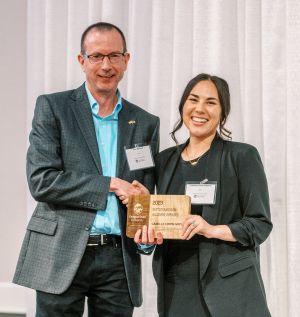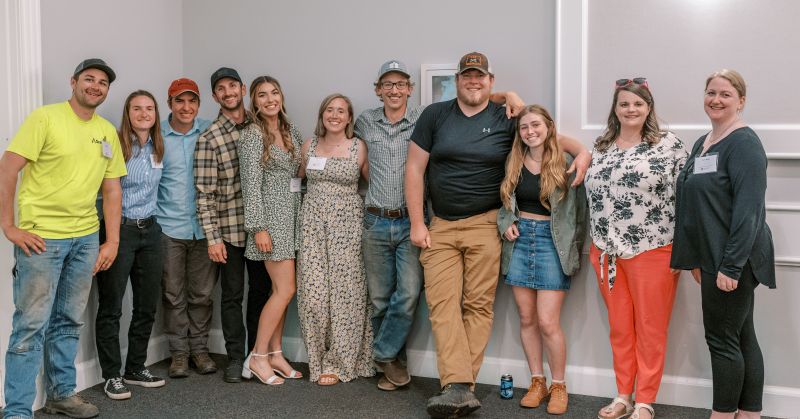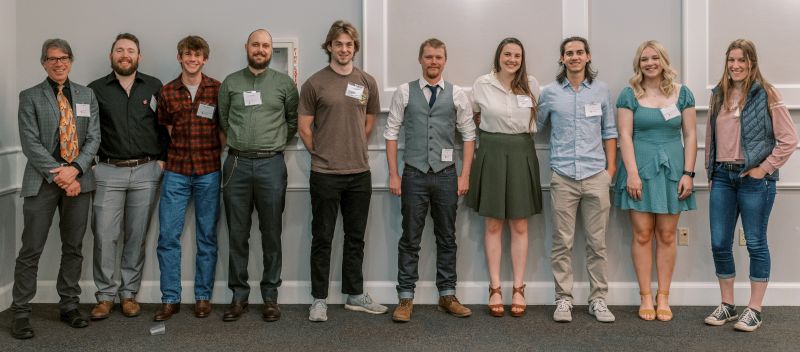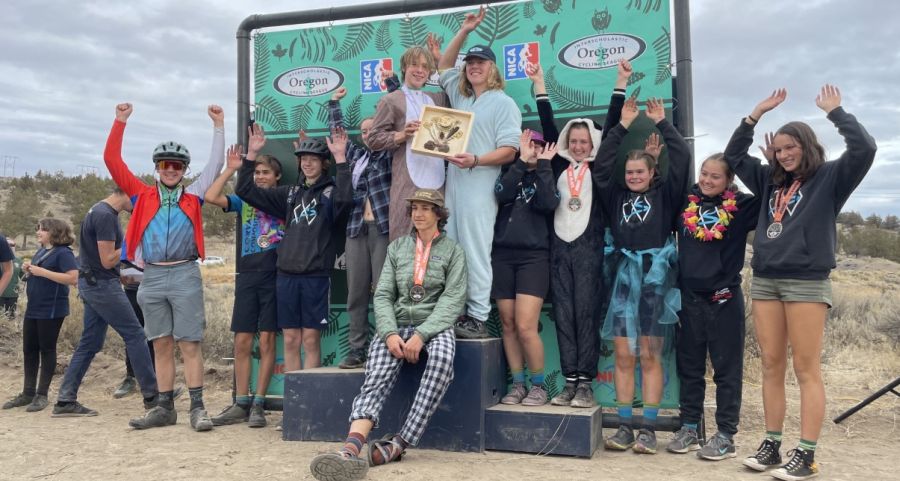By Jeff Hatten, Department Head Forest Engineering, Resources, and Management
Soils support life by providing diverse ecosystem services, including water supply and quality, biodiversity and habitat for plants and animals, recreation opportunities, carbon sequestration, and the delivery of timber and non- timber products. However, disturbances (both direct and indirect) can lead to a degradation of soils that can persist for long periods of time. Soil health is a useful way of conceptualizing the state of soils. Forest soil health can be defined as a soil’s capacity to function within ecosystem and land-use boundaries to sustain plant and animal fitness, ecological biodiversity, primary productivity, and environmental quality. A precise definition of soil health is challenging because it depends on specific site conditions and the human values in that place and time.
Impacts to forest soil health can include actions such as alteration of soil physical properties (e.g., compaction and erosion) or chemical conditions (e.g., organic matter loss, acidification, nutrient loss). Additionally, we need to consider more diffuse impacts generated by human actions (e.g., changes to fire regimes, climate change, pollution, invasive species) that can stress forest soils in ways that alter or impair their ability to function.
THREATS TO FOREST SOIL HEALTH IN CENTRAL AND EASTERN OREGON
Shifts in a forest’s fire regime can have major implications for the soils that support it. The term ‘fire regime’ refers to the typical frequency, intensity, duration, aerial extent, and seasonality of wildfire disturbance in a particular ecosystem. Fire regimes are changing with our climate across many parts of the globe, including Oregon. Some changes, so far, are subtle, while others have resulted in an increased occurrence of high severity “megafires”, with these fires more intensely impacting larger areas. Contributing factors include increased fuel loads due to long-term fire suppression, extended periods of drought, and global warming related increases in fire season. A shifting fire regime is probably the single greatest threat to our dry Oregon forests and soils.
Fire effects on soils depend on burn intensity, heat duration, and O horizon consumption. Noted fire effects include increased erosion potential, changes in post-fire soil temperature and water holding capacity following O horizon consumption, reduced soil carbon and nutrient pools, and increased soil pH. With time, available nitrogen can increase but be leached or immobilized by microbes, effectively reducing post-fire plant N supply.
Consumption of the above ground vegetation and O horizon by high severity fire exposes surface soils to rainfall impact, promoting runoff, surface erosion, and the potential for mass wasting. Furthermore, high severity fires can lead to lower infiltration rates due to the creation of hydrophobic, water-repellent, soil layers with surface sealing that can enhance surface runoff. On the other end of the spectrum are low severity fires which leave much of the soil cover intact.
Erosion and nutrient losses are negligible after low to moderate severity fires. Many of central and eastern Oregon’s forest ecosystems are adapted to frequent, low to moderate severity fire. Concurrently, the soils of these ecosystems have formed and are also adapted to these levels of disturbance. Changes to the fire regime because of fire suppression and human caused climate change means that we need to consider management treatments that increase the resilience of the forest to these perturbations and preserve soil health. Forest management activities (e.g., fuel and vegetation management, return of low intensity fire, and selective harvest) that reduce high-severity fire risk can maintain and enhance forest soil health. Without such fuel reduction activities forest soil health will be at risk to the effects of high severity wildfire, particularly in fire-prone regions around the world.
HARVESTING AND MECHANICAL FUELS MANAGEMENT FOR RESILIENT FORESTS
Mechanical techniques that reduce fuels can include harvesting, thinning, and mastication. Forest harvest activities create disturbances, but with different impacts on soil that depend on harvest frequency (e.g., rotation length) and the magnitude of the biomass removal. The impact to soil health depends to a large degree on the silvicultural system utilized, which can range from gentle, single-tree selection to intensive, clear-cut harvesting – the latter potentially causing considerable disturbance to surface soils (e.g., compaction, organic matter removal) and their associated functions (e.g., water infiltration rate, nutrient supply).
On the other hand, thinning and lower intensity harvesting techniques tend to have minimal impacts to forest soils, especially when soils are protected with slash mats. While leaving slash and an intact forest floor (O horizon) can protect the forest soils from compaction and carbon and nutrient loss – it can leave the site vulnerable to fire. Subsequently these materials can be masticated, piled and burned, or sometimes left and broadcast burned.
Prescribed burning is the process of intentionally setting fire to the forest to reduce fuels or otherwise elicit some desired response from the ecosystem.
These fires are typically set in the spring or fall when fuel moistures are high and burning conditions allow for management of the fire. These fires typically burn at low to moderate severity, with fall burns typically resulting in moderate severity fire due to low fuel moisture and spring burns typically resulting in low severity fire because of higher fuel moistures. Fall burns are more effective at reducing fuel loads than spring burns. Low severity prescribed fire typically has no detectable effect on soils (aside from consumption of the O-horizon), while moderate severity fires can result in higher soil pH and available nutrients but a slightly higher risk for erosion and leaching of nutrients.
BEST MANAGEMENT PRACTICES TO MAINTAIN SOIL HEALTH
Harvesting and site restoration efforts should focus on keeping soil in place with ground cover composed of recent harvest residues or a developed forest floor for stand renewal, development, and stability. Care should be taken to reduce compaction, maintain soil organic matter, nutrient capital, and soil moisture holding capacity to help prevent erosion losses of forest soils. Reintroducing fire into a fire suppressed landscape may result in fire severity that is too high to maintain soil health. However, a combination of thinning, pile burning, spring burns, and fall burns can be used to lower fuel accumulations and maintain soil health and increase the resilience of the forest to future disturbances.
This article was originally printed in the Oregon State University Extension Service newsletter, Life on the Dry Side.



























